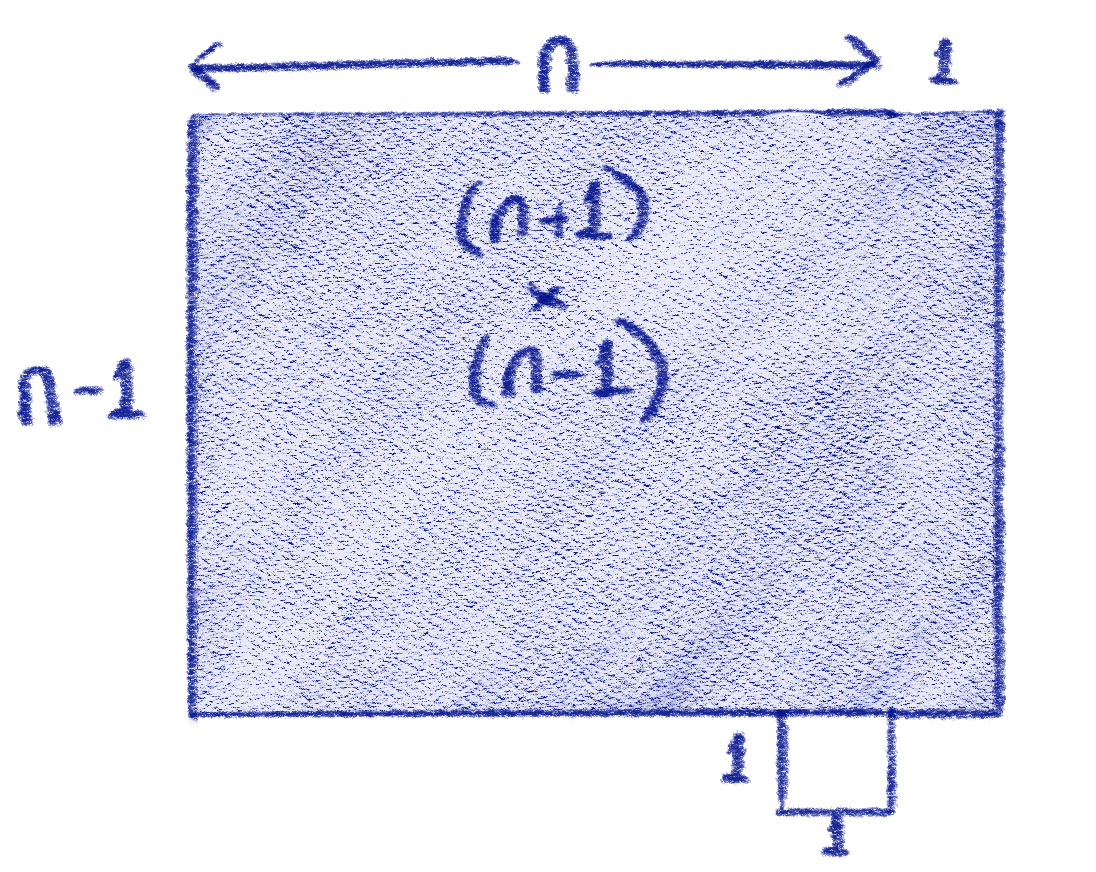Braess' Paradox
Traffic is interesting. When there are jams, it can seem like the obvious solution is more investment in roads. That is not always the case. Indeed, sometimes removing a road can improve traffic flow.
This is Braess’ paradox.
Let us imagine a simple road network with two locations, A and B. Each morning, people commute from A to B, and return each evening. The road network looks like the picture below. Don’t worry about how it is annotated for now.
We can represent the network with a simpler diagram. Again, don’t worry about the numbers just yet.
There are two routes from A to B, a top road and a bottom road. Both roads have a high capacity and a low capacity section.
The low capacity section goes through narrow roads in a village. As such it takes an amount of time depending upon the number of vehicles. I’ve set this to be 5 minutes plus a delay depending upon traffic. I have modelled this as the number of vehicles divided by 100, so 1000 cars an hour gives a 10 minute delay.
The high capacity section always takes 30 minutes, it is a longer drive as it loops around the village, but it can take any number of vehicles.
Both routes are the same. Each has a 30 minute section plus a section that depends upon the amount of traffic. So, let us assume that the traffic of 2000 vehicles splits evenly. Each route takes 1000 vehicles. This gives us a journey time of 30 minutes on the high capacity section, and 15 minutes on the low capacity section - a total journey time of 45 minutes. For every vehicle.
No driver can do better. Anyone that switches finds themselves on a road with more traffic, and this slows down that route.
One day, a planner looked at a map and noted the two roads came close to each other (I have labelled these points as X and Y). They decided to order a connection link to be built. For simplicity, we’ll assume the connection takes no time to nagivate.
Let us imagine a situation where nobody is using the new link, then one day, someone who normally takes the high road moves to the bottom road.
They then change their mind and use the link.
When they do this, a regular bottom road user decides on a whim to follow suit and they transfer as well (just to keep it symmetrical). Thus, the number of cars on each road is now as follows:
The new journey time for the two cars using the link is (1001/100+5) minutes for each leg through a village, that’s a touch over 15 minutes. The total journey time is a little over 30 minutes.
This is MUCH better than not using the link (but everybody else’s journey gets slightly worse, 45 minutes and a few seconds; they get no improvement on the high capacity road, but the low capacity road is imperceptibly slower.
Word gets around about the improvements to be had. Any driver can improve their time by using the link appropriately.
Fast forward a few weeks and now four hundred vehicles are using the link, giving us 1200 people on the roads prone to congestion. The transit time for these are now (1200/100 + 5) or 17 minutes. Anyone using the link has journey time of 2x17 minutes (34 minutes, vs 47 minutes for people sticking with one road).
Anyone using the rat-run the ‘wrong way’ has a 60 minute journey.
The people on the rat-run are making it worse for people not using the rat-run, but EVERY individual can do better if they take the congestable, low capacity, routes.
i.e. Everyone individually does better by traversing the network A->Y->X->B
Thus, more people transfer to using the rat-run. Eventually, all 2000 cars use the rat-run for a transit time of two lots of 25 mins. The total journal time is now 50 minutes for everyone. After all, that still beats 55 minutes being the only guy to stick to one road, or 60 minutes using the rat-run the wrong way.
However, we started off with a 45 minute journey for everyone. We’ve gone to the expense of making this new road, and journal times have got worse.
And at every stage, each individual could do better than the current average by changing roads.
(With a different delay equation, there might have been a balance with some traffic using the other option, the argument is the same though.)
This is Braess’ paradox: Adding the extra road reduced the capacity of the road system - all the journey times increased. This will not always be the case, but it could be.
Such a reduced capacity could also have a knock on effect, as cars won’t be clearing the road for the cars that come later.
If ‘only’ everyone decided not to use the rat-run, journey time for all would drop from 50 to 45 minutes. If the rat-run exists, any individual can always improve their lot by using it correctly. The only way to prevent that is not to have that road.
In a real road system, there are hundreds or thousands of such links, and it is not at all obvious which links help, and which hinder.
There will also be delays due to merging traffic to contend with as well.
But, it is not the case that the answer to congestion is always as simple as more roads.
Links
Title image (cropped) Musyajackson / CC BY-SA
Further reading: Andrew Boyd on Time Square.
Braess’ Paradox: Some New Insights - Eric I. Pas and Shari L. Principio. Transpn Res.-B, Vol. 31. No. 3, pp. 265-276, 1997
Über ein Paradoxon aus der Verkehrsplanung - Dietrich von Braess, 1968 (in German)
On a Paradox of Traffic Planning - Dietrich von Braess (2005 translation of the 1968 paper)
Dr Braess’ homepage (English)
A selection of Maths posts.








